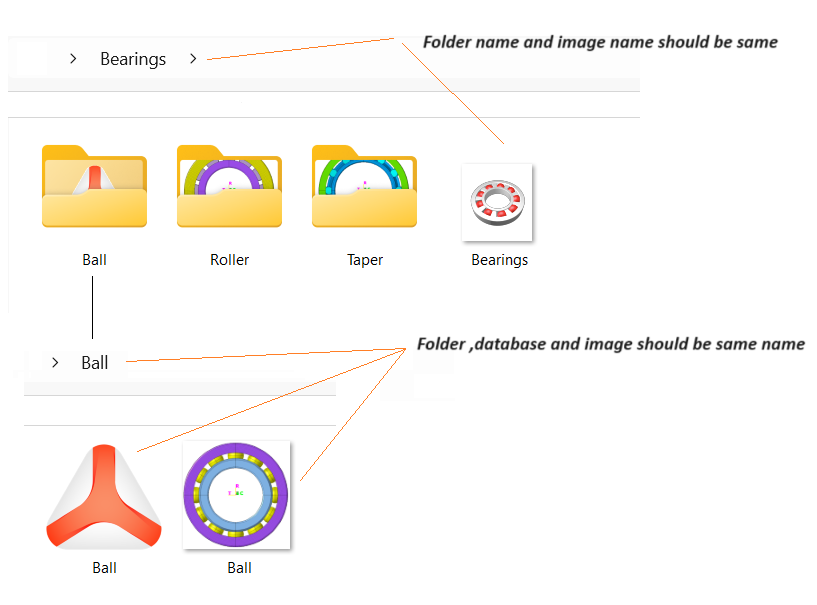Catalog
Introduction
SimLab optimizes the management of simulation data, boosting efficiency, accuracy, and consistency throughout the modelling and analysis process. This ensures that catalog entries are well-organized and reliable, enhancing overall data quality and usability.
Catalog Overview
- Catalog Definition
- Catalog: A structured library or database containing standard models, processes, or templates such as Geometry, Finite Element (FE) models, or Solutions.
- Each item in a catalog is represented as an icon, which may be an individual item or a folder containing multiple items. Items can also refer to other items or catalogs, allowing for hierarchical organization and reuse.
- Types of Catalogs
- Application Catalog
- Located in the SimLab installation folder (e.g., ../SimLab/bin/win64/Catalogs).
- Contains standard models, processes, or templates provided with SimLab.
- Users typically cannot modify these catalogs.
- User Catalog
- Found in the .altair folder on the user's machine.
- Allows users to create, modify, and save their own catalogs.
- These can be shared across teams to standardize processes with predefined models.
- Application Catalog
User Interface Layout
- Top Left Window (Application Catalog)
- Displays the catalog items that cannot be modified by users.
- Shows both the built-in SimLab catalog and any additional catalogs added by users.
- Icons represent items or folders, allowing users to navigate through the catalog structure.
- Bottom Left Window (User Catalog)
- Displays user-modifiable catalogs.
- Supports creating, editing, and saving catalogs.
- Top Right Window (Preview Window)
- Provides a detailed view of the selected item from the catalog.
- Often displays an exploded view to give a comprehensive understanding of the item.
- Bottom Right Window (Property Window)
- Lists the properties of the selected catalog item.
- Shows detailed text fields to describe attributes and settings of the item.
Key Points to Remember
- Catalogs enhance efficiency by allowing users to quickly access standardized templates and models.
- Application Catalog is restricted and mainly serves as a reference.
- User Catalog is flexible, enabling personalization and adaptation to specific project needs.
- Preview and Property Windows help users understand and modify catalog items effectively.
This system streamlines the modeling process, ensuring consistency.
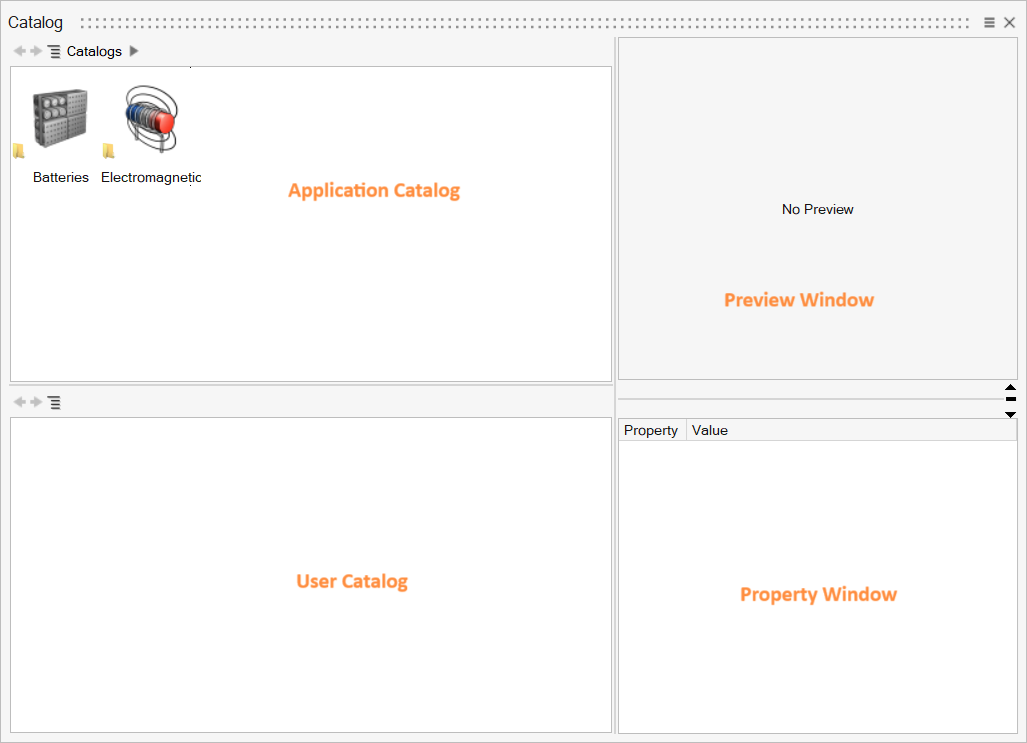
- Application Catalog
The Application Catalog displays items that are available for use but cannot be modified. It includes:
- Default Catalogs: The standard catalogs provided with the SimLab product.
- User-Added Catalogs: Additional catalogs that users have added.
Key Feature- Icons Representation
- Each catalog and item are represented by an icon.
- Icons may represent a single item or a group of items and catalogs (indicated by a folder icon).
- Add Catalog Option
- Available via right-click in the Application Catalog.
- Allows users to select a folder from their machine or network.
- The contents of the selected folder are then displayed as items within the Application Catalog.
This feature helps in organizing and accessing standard models and templates efficiently while maintaining a clear and consistent catalog structure.
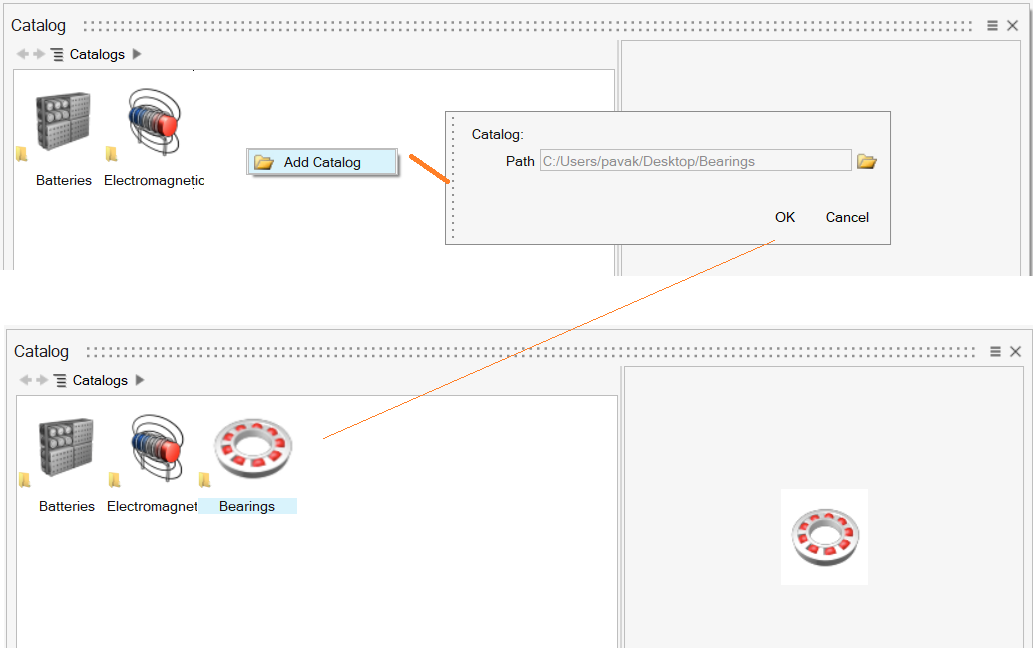
In this example, adding a Bearing Catalog to the Application Catalog lets you view several types of bearings by double-clicking on the catalog.
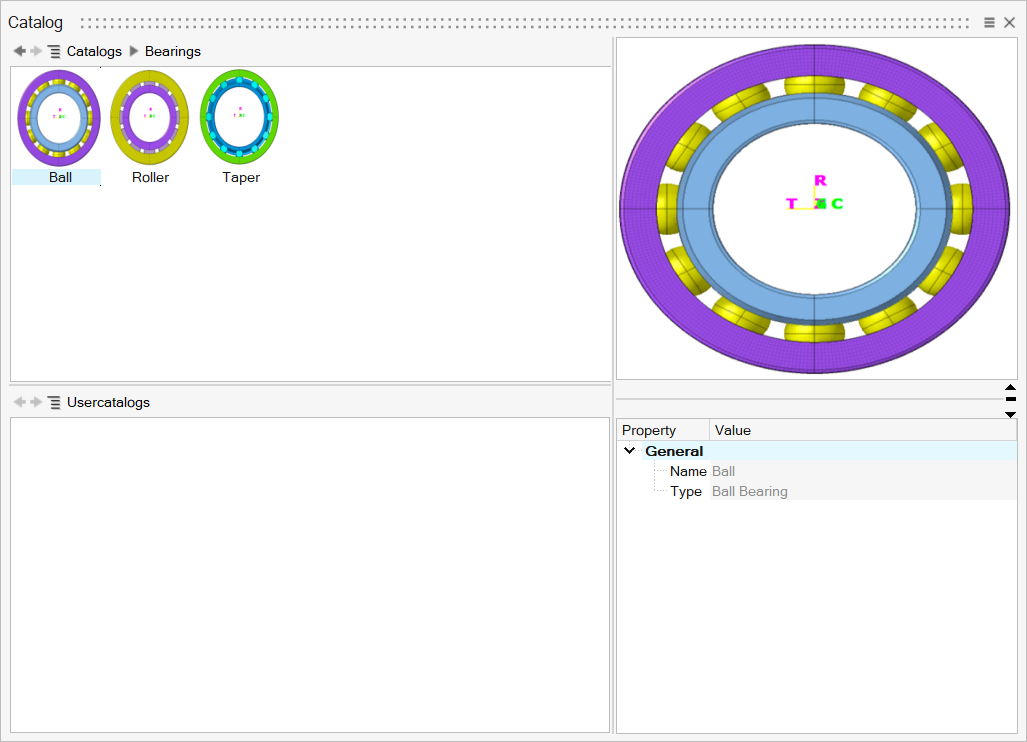
- User Catalog
The User Catalog allows users to modify and save catalogs in their .altair folder (C:\Users\<username>\.altair\SimLab_Version\simlab\Usercatalogs). Users can drag items from the Application Catalog to their User Catalog, make modifications, and the changes will be automatically saved.
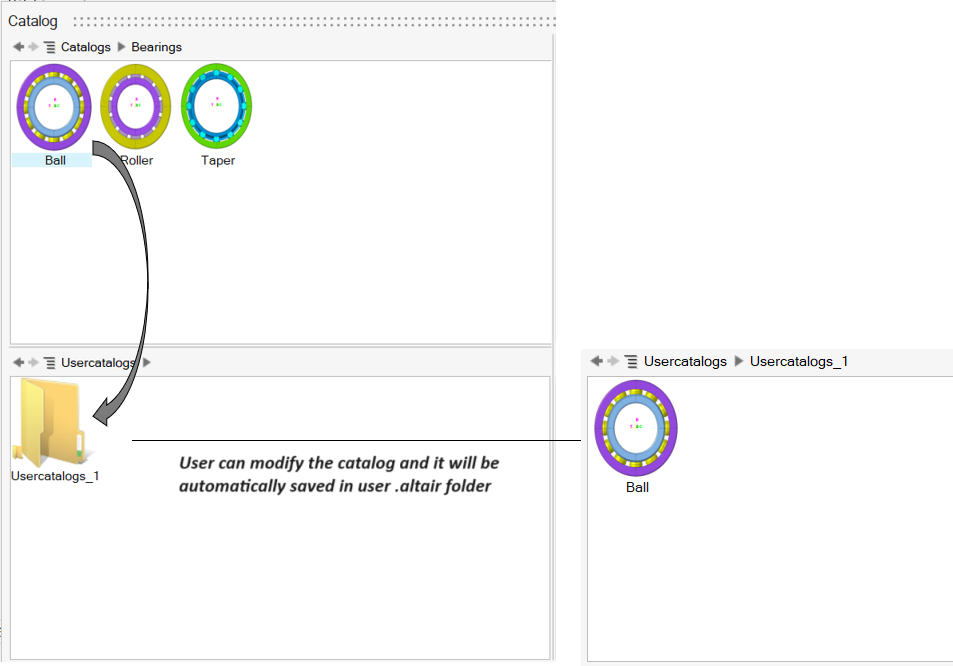
Right-Click Options in the User Catalog
Users can manage catalogs using right-click options in the User Catalog:
- Create: Create a new catalog.
- Add File: Add or replace a file in the selected catalog.
- Add Folder: Add a new catalog (folder) to the selected catalog.
- Locate: Open the location of the selected catalog.
- Delete: Remove the selected catalog.
Preview Window
Provides an exploded view of the icon, showing detailed information about the selected catalog.
Property Window
Displays the properties of the selected catalog in text fields.
How to Create a Catalog
To create a catalog in SimLab, follow these steps:
- Create a Folder: This folder will serve as your catalog. Place it on your machine or network.
- Add Required Files
- Image File (*.png): This image represents the catalog item and is used for identification. It will be displayed in the SimLab interface and can be double-clicked to open the catalog.
- Database / Script Files
- Model Files (*.gda, *.slb): These files are imported into SimLab.
- Circuit Files (*.scm): For circuit modeling.
- Python Scripts (*.py): Executed when the catalog item is used.
- Properties File (*.xml): Contains details about the catalog item, which are displayed in the Property Window.
- Naming Convention
Ensure the folder and its contents have consistent names. For example, if the user wants to customize the bearings, the folder is named Ball:
- The database file should be named Ball.slb.
- The image file should be named Ball.png.
- The properties file should be named Ball.xml.
Click here to access a sample catalog.
